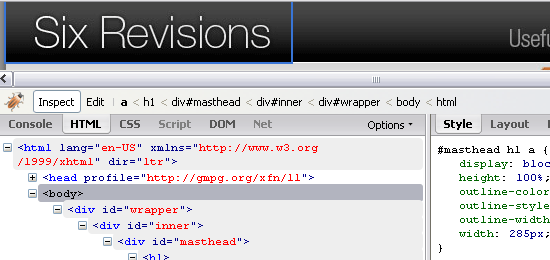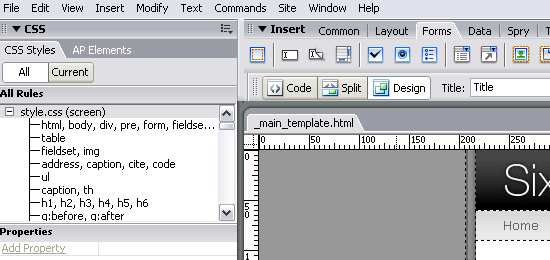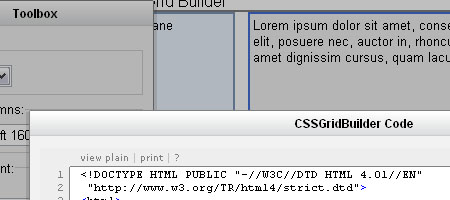Firebug

Firebug is a free, open source in-browser web development tool for the Firefox web browser. It’s many features include: on-the-fly HTML and CSS editing for tweaking or debugging, a Console for logging, analyzing and debugging JavaScript, and an intuitive Document Object Model (DOM) inspection tool to help you quickly see how the elements of a web page relates to one another.
Firebug’s popularity is so immense it’s one of the few Firefox extensions that have its own extensions (like YSlow and FirePHP)!
Dreamweaver

Adobe Dreamweaver is a commercial application for web development that’s available for the Mac and Windows operating systems. Its featured-packed suite of tools and options include: syntax highlighting and very smart Code Hinting, a built-in FTP client, project management and workflow options that make team work effortless, and Live View – which shows you a preview of your source code. Dreamweaver tightly integrates with other popular Adobe products such as Photoshop, allowing you to share Smart Objects for quick and easy updating and editing of graphics components
CSS Grid Builder

CSS Grid Builder is an online GUI for customizing the YUI Grids CSS – a lightweight CSS framework developed by Yahoo! that comes with over 1000 page layout combinations. The CSS Grid Builder allows you to rapidly generate a CSS-based, web-standards compliant page layout in a matter of minutes (or even seconds). Once you’ve got the page layout the way you want it, all you have to do is press "Show Code" and it generates the HTML for you.
You don’t even have to host the CSS file on your web server (saving you some bandwidth and maintenance hassles), the generated code links to the appropriate stylesheet found on Yahoo!’s Developer Network API.
Clean AJAX

Clean AJAX speeds up Ajax development by cutting down the amount of code you have to write (and rewrite), giving you access to common and proven design patterns used in Ajax applications. Clean AJAX can be used with any server-side technology such as PHP, RoR, and .NET because it’s JavaScript-based. Check out the demo page so you can see Clean AJAX in action.
Notable mentions
Here are other tools that were voted on that are worth a quick mention.- Adobe Flash
- Web Developer (Firefox extension)
- Aptana
- paper and pen/pencil (for paper prototyping/sketching).
- CSSEdit
- Notepad++
- GIMP
Comments
Post a Comment